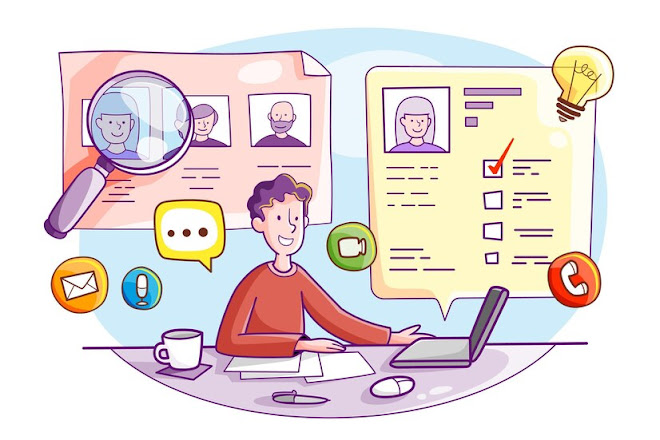In today’s rapidly evolving business landscape, organizations increasingly rely on effective performance management systems to align employee objectives with broader company goals. Performance management systems enable businesses to assess, track, and enhance employee productivity while fostering professional growth. This article explores the various types of performance management systems, their purpose, and how they contribute to organizational success.
What Is a Performance Management System?
A performance management system (PMS) is a structured framework designed to evaluate and improve employee performance. By setting clear expectations, tracking progress, and providing constructive feedback, a PMS helps organizations ensure that individual efforts align with company objectives. Modern performance management systems leverage technology, such as "performance management tools," to streamline processes and deliver actionable insights.
1. Traditional Performance Management System
Overview: Traditional performance management systems focus on annual reviews, where employees’ performance is assessed against predefined goals. This system emphasizes documenting past performance rather than continuous development.
Purpose:
To provide a formal evaluation of employee performance.
To determine salary adjustments and promotions.
Drawbacks: While effective in structured settings, this system often lacks the flexibility needed to address dynamic business challenges.
2. Continuous Performance Management System
Overview: Continuous performance management systems in Noida replace periodic reviews with ongoing feedback and real-time assessments. Employees and managers engage in regular check-ins to set and review goals.
Purpose:
To encourage open communication.
To provide real-time course corrections.
To foster employee development.
Example Usage: This system is ideal for agile workplaces that value adaptability. With tools like "performance management software in Noida," organizations can integrate continuous monitoring seamlessly.
3. 360-Degree Feedback System
Overview: The 360-degree feedback system collects input from various stakeholders, including peers, subordinates, and managers. This multi-dimensional approach ensures a holistic evaluation of an employee’s performance.
Purpose:
To provide comprehensive feedback from diverse perspectives.
To identify areas for improvement and development.
Benefits: By using "performance management tools," companies can automate feedback collection, making the process efficient and unbiased.
4. OKR-Based Performance Management System
Overview: Objectives and Key Results (OKR)-based systems focus on aligning employee goals with broader organizational objectives. This system emphasizes measurable outcomes.
Purpose:
To ensure organizational alignment.
To foster accountability through specific, trackable goals.
How It Works: Employees set objectives with measurable key results. Progress is tracked regularly, ensuring alignment with organizational priorities. Using advanced "performance management software in Noida," companies can track and analyze OKRs efficiently.
5. Behaviorally Anchored Rating Scale (BARS)
Overview: BARS evaluates employees’ performance by comparing their actions to predefined behavioral examples for each role. It blends qualitative and quantitative data to ensure accurate assessments.
Purpose:
To provide consistent and fair evaluations.
To identify behavioral patterns that impact performance.
Application: This system is particularly useful in roles requiring interpersonal skills or client interaction. "Performance management tools" help automate data collection and analysis, ensuring objective assessments.
Benefits of Implementing a Performance Management System
Regardless of the type, performance management systems offer several organizational benefits:
Enhanced Employee Engagement: Regular feedback fosters a sense of purpose and belonging.
Improved Productivity: Aligning individual goals with organizational objectives ensures focused efforts.
Data-Driven Insights: Modern tools provide analytics that guide decision-making.
Organizations seeking comprehensive performance management solutions can rely on "CloveHRMS HRMS Software in Kerala." With its robust features, CloveHRMS integrates seamlessly into existing HR workflows, enabling effective goal setting, performance tracking, and actionable insights.
Selecting the Right Performance Management System
When choosing a PMS, organizations should consider:
Business Goals: Identify the system that aligns with organizational objectives.
Employee Needs: Prioritize systems that foster engagement and development.
Scalability: Ensure the system can grow with your organization.
How Technology Enhances Performance Management Systems
Modern "performance management software in Noida" leverages technology to:
Automate routine tasks, such as goal setting and progress tracking.
Provide real-time feedback through AI-driven analytics.
Enable remote performance monitoring for distributed teams.
The Future of Performance Management
The evolving workplace demands innovative performance management solutions. Future trends include:
AI Integration: Predictive analytics for identifying high performers.
Personalization: Customized development plans tailored to individual needs.
Mobile-First Solutions: Accessible tools for on-the-go performance tracking.
Conclusion
Performance management systems are essential for organizations aiming to enhance productivity, engagement, and alignment. From traditional annual reviews to AI-driven continuous feedback, each system serves unique purposes. With advanced tool like CloveHRMS HRMS Software in Kerala, businesses can optimize performance management processes and foster sustained growth.

.jpg)





.jpg)